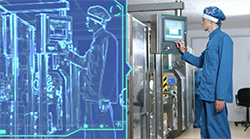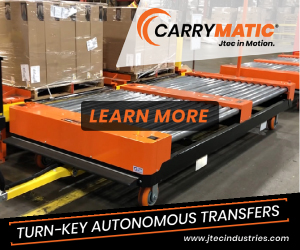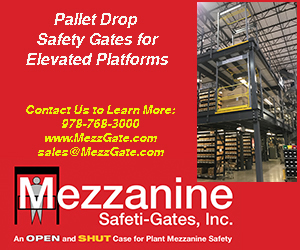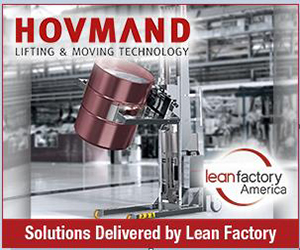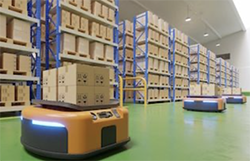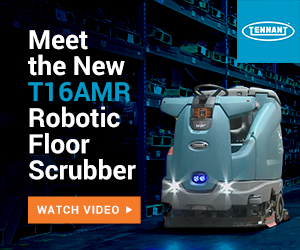The companies that have really excelled financially during COVID-19 are the companies that have a strong e-commerce presence and have ramped their investments in automation and other digital supply chain technologies so they can be more agile and responsive to the change in customer demand.
|
Innovations like mobile robots are helping the material handling industry tackle problems like increased demand and labor shortages. Part of this is identifying tasks that are ideal for robotic solutions that are manually intensive and predictable. But managing the tasks is only one part of the equation. Companies must also consider the impact this will have on their employees.
|
With innovations constantly being created and implemented across all industries, the supply chain must adopt new digital technologies and methods to remain competitive. These technologies when fully integrated provide opportunities to streamline supply chains end to end making them more efficient. Evaluating and testing before implementing is ideal but supply chains are complicated with many moving parts. However, you can examine your end-to-end supply chain and the effects of any new technology by using a digital twin.
|
Almost every product in our country is touched by a lift truck at some point in its lifecycle. In turn, these lift trucks need power by either internal combustion (propane, gasoline, diesel, natural gas) or electric (batteries). The large majority of lift trucks (over 64% and growing) are powered by electric batteries.
As countries extend their quarantine measures due to the COVID-19 pandemic, warehouses and factories worldwide keep facing overwhelming challenges. Social distancing has become common in many workplaces, and online shopping continues to rise globally. Just in the US and Canada, there has been a 129% year-on-year growth as of April 21. Understandably, companies are trying to adapt their strategies, and some look at automation solutions to increase throughput.
There is a lot of uncertainty in the world today due to the COVID-19 pandemic. The team at MHI wants to assure all ProMat 2021 exhibitors and attendees that plans are fully underway to hold a safe and productive event in April 2021 in Chicago. MHI is committed to making ProMat 2021 an exceptional experience with a combination of a live, face-to-face event, as well as a digital platform to supplement the in-person event.
|
Scissors lifts have a variety of applications. They can be mobile, integrated and customized to meet the exact requirements of the user and provide greater safety and higher productivity than using ladders or fixed platforms.
ProGMA now has a new search tool to help you quickly find the protective guarding products you’re looking for. This tool is a one-stop resource for facility managers/safety managers/end users to access comprehensive information on any and all guarding products. Not only does it list, explain and show examples of technology solutions, but it also links to the companies that sell them, making it easy to request a quote.
The pandemic has placed a huge burden on warehousing operations. Stay-at-home orders and health concerns have driven shoppers away from brick-and-mortar retail to e-commerce alternatives, with online retail sales up as much as 76% over last year. At the same time, the workforce remains compromised as workers stay at home to manage health and childcare. The situation has led to a surge in warehouse automation, and it looks like robots will be a crucial part of the new normal for the supply chain.
|
The talent gap has long been a top concern in our industry, and the rapid retirement of baby boomers is only aggravating the problem. MHI’s 2020 Annual Industry Report aims to address the workforce shortage holistically – focusing on how technology, data and culture can come together to bridge that gap. This video focuses on building the next generation workforce.
|
As more organizations work toward achieving a digital supply chain — investing heavily in a range of technologies (cloud computing, predictive analytics, artificial intelligence, machine learning, Internet of Things, and more) to keep pace with customer expectations, gain competitive advantage, position themselves for the future, and attract talent — the ongoing challenges of the existing skills gap continue to hamper progress.
|





